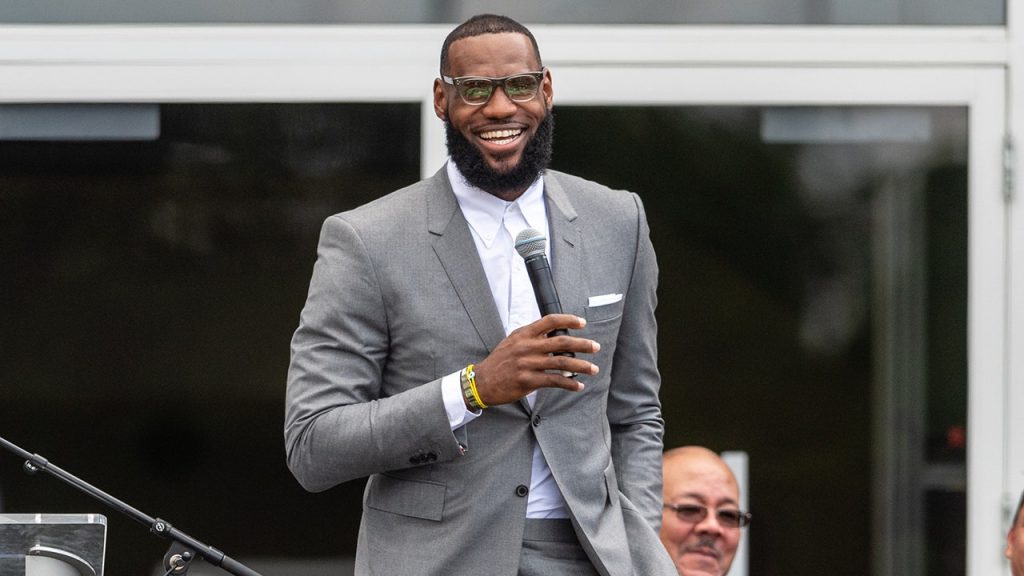LeBron James’ I Promise School: Progress Amid Persistent Challenges
Recent data released by the Ohio Department of Education reveals a complex picture of LeBron James’ I Promise School in Akron. Established in 2018 to serve at-risk children, the school continues to face significant academic hurdles despite some signs of improvement. The school, which was launched with considerable fanfare and media attention as part of James’ commitment to his hometown community, aims to provide educational opportunities for students who might otherwise fall through the cracks of the traditional public school system. While the initial vision was ambitious and well-intentioned, the reality of transforming educational outcomes for vulnerable students has proven to be a formidable challenge, underscoring the complexity of educational reform in communities facing systemic disadvantages.
The latest test scores paint a sobering picture of academic achievement at I Promise. Math proficiency remains particularly concerning, with just 2.7% of seventh-graders (2 out of 75 students) passing the state math test in the 2024-25 school year—significantly below the state average of 50%. Similarly, English Language Arts results show troubling gaps, with only 6.6% of sixth-graders (5 out of 76) passing, compared to the state average of 54.5%. These figures represent a pattern across grade levels, with most classes showing proficiency rates in the single digits or teens, typically 40-50 percentage points below Ohio state averages. Such statistics have led to I Promise receiving the lowest possible one-star rating in overall achievement from the Ohio Department of Education, highlighting the substantial work that remains to bring student performance in line with statewide standards.
Despite these concerning academic metrics, there are glimmers of hope within the data. The Ohio Department of Education awarded I Promise four stars for “Progress,” noting “significant evidence that the school exceeded student growth expectations.” This designation suggests that while absolute achievement remains low, the rate of improvement among students may be notable. The fifth-grade class emerged as a relative bright spot, with 24.4% of students (20 out of 82) passing the math proficiency test—still below the state average of 56.7%, but markedly better than other grades within the school. This improvement, though modest when compared to state averages, represents meaningful advancement for a student population that faces numerous socioeconomic challenges and may have entered the school significantly behind grade level, pointing to the incremental nature of educational progress in high-need communities.
The current reality at I Promise stands in stark contrast to the early optimism that surrounded the school’s launch. In 2019, The New York Times published an article titled “LeBron James Opened a School That Was Considered an Experiment. It’s Showing Promise,” reflecting the initial positive narrative. James himself expressed enthusiasm about the students’ progress, telling the Times, “These kids are doing an unbelievable job, better than we all expected.” He emphasized that the school was addressing previously unrecognized educational deficits among its student population. However, the Times appears not to have followed up with reporting on the school’s test scores in subsequent years, raising questions about the sustainability of early gains and the media’s appetite for following educational initiatives beyond their headline-grabbing beginnings.
The I Promise School’s journey illustrates the profound challenges inherent in addressing educational inequity. While celebrity-backed initiatives like James’ school bring valuable attention and resources to underserved communities, they also reveal that there are no quick fixes for deep-seated educational disparities. The school’s mission to serve at-risk students means it starts with a population facing significant academic and often socioeconomic challenges. Meaningful educational transformation requires sustained commitment, appropriate resources, evidence-based interventions, and realistic timelines. The “Progress” rating from the state education department suggests that I Promise may be laying groundwork for future improvement, even as current achievement scores remain concerning. This nuanced reality reflects the complex interplay of factors that influence educational outcomes in high-need communities.
The continuing story of I Promise School serves as both a cautionary tale and a reminder of the importance of persistence in educational reform. The gap between initial publicity and current results highlights the need for realistic expectations when addressing entrenched educational challenges. While the school’s current academic performance falls short of hopes, the indication of student growth suggests potential for long-term improvement if the right supports remain in place. For LeBron James and the Akron community, the journey of I Promise represents a meaningful, if difficult, investment in providing educational opportunity to vulnerable students. The coming years will be crucial in determining whether this ambitious educational experiment can build on its modest progress to create sustained academic success for the students it serves, ultimately fulfilling its promise to be a transformative force in their lives.


